9 Things to Try If Your Computer is Stuck Restarting
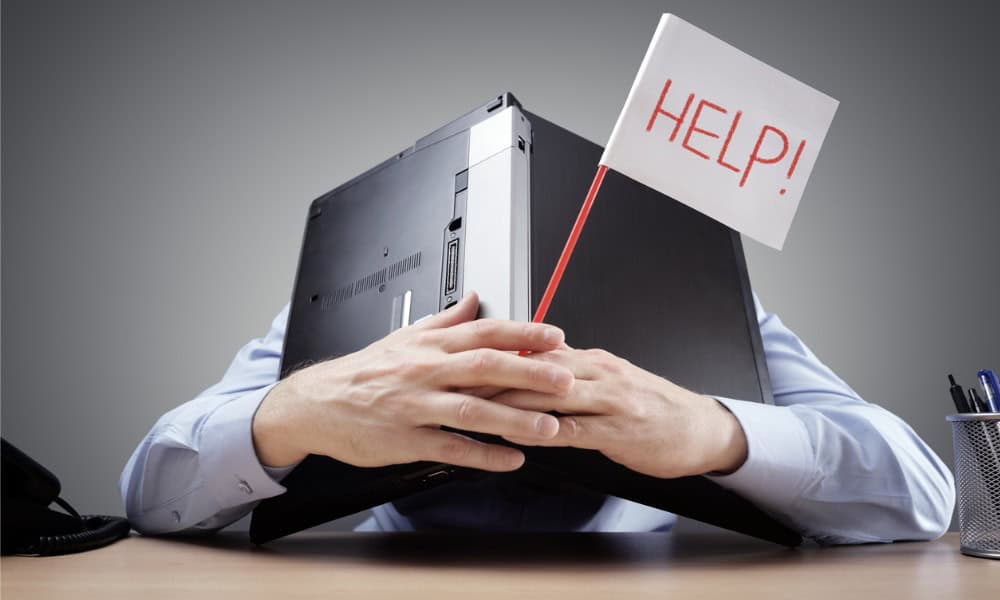
Is your computer getting stuck trying to start? If so, here’s what to try if your computer is stuck restarting.
We all get stuck sometimes. Whether it’s that final clue on your crossword or when Alan from across the road decides to park across your driveway, there are times when we feel like we’re going nowhere fast.
Your computer can sometimes feel the same. You may find that when you try to restart your computer, it never quite makes it. Instead of being welcomed by your beautiful Windows desktop, your computer stays firmly lodged in the middle of restarting and refuses to budge.
The good news is that there are a few things you can try if you’re having issues with your computer being unable to start properly. Here’s what to try if your computer is stuck restarting.
1. Power Off and Restart
The first thing to try if your computer is stuck restarting is to force it to shut down. Once it has shut down, you may find that it restarts again without an issue.
- Press and hold the Power button for your computer until it turns off. You may need to wait several seconds.
- Once your computer has completely shut down, press the Power button again to start it up.
2. Remove Peripherals to Troubleshoot a Computer That Is Stuck Restarting
If your computer gets stuck every time you try to restart it, then it may be because one or more of your peripherals may be interfering with the startup process. If there are issues with these devices, such as corrupt or outdated drivers, they may stop your computer from starting up.
Try removing any unnecessary peripherals, such as webcams, external hard drives, and connected devices such as phones or cameras. The power off and restart your computer following the steps above.
3. Update Drivers
If you can restart your computer with the peripherals disconnected, then one or more of them is causing the issue. You can try updating the drivers for these devices to see if this allows you to restart your computer even when these devices are connected.
- Right-click the Start icon.


- Select Device Manager.

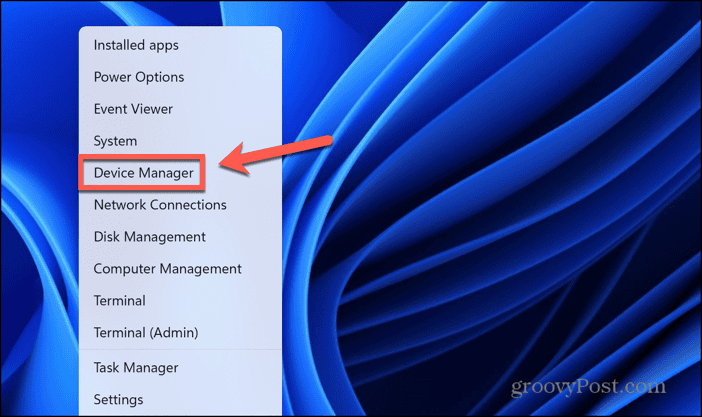
- Expand the category for the device driver you want to update.
- Right-click the device and select Update Driver.


- Select Search Automatically for Drivers.


- If any available driver updates are found, they will be installed.
- Repeat for any other peripherals.
- Try restarting your computer with the peripherals connected.
4. Boot in Safe Mode If Your Computer Is Stuck Restarting
If you’re unable to restart your computer even with the peripherals disconnected, you can try restarting in Safe Mode. This will only load essential drivers and system files, which will give you a greater chance of getting your computer started again without the risk of other drivers and software causing issues.
- Press and hold the Power button on your computer until it shuts down.
- Press the Power button again to restart and then repeatedly press the F8 key until a blue screen appears.
- Select Troubleshoot.

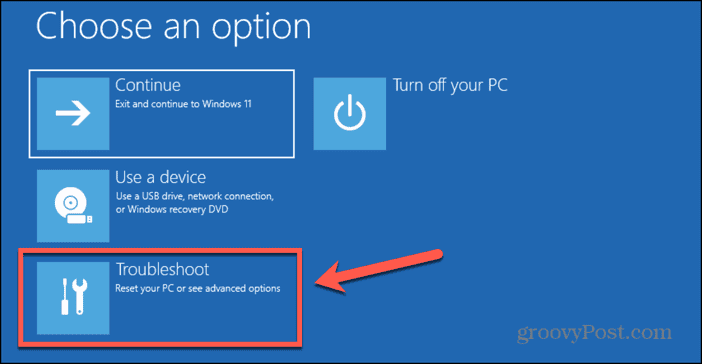
- Click Advanced Options.


- Select Startup Settings.


- Click the Restart button.


- Press 4, 5, or 6 to select an Enable Safe Mode option.

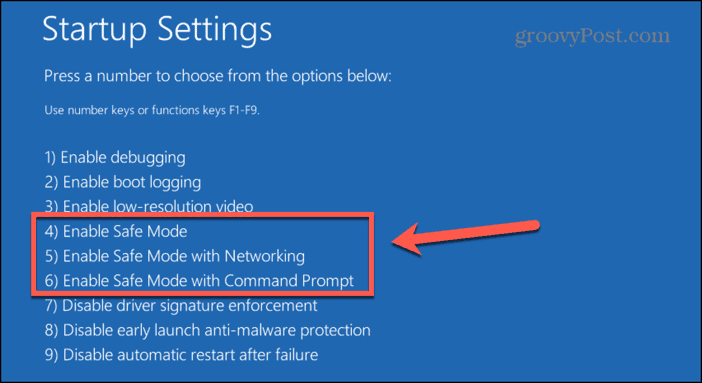
- Your computer will start in Safe Mode.
5. Run an SFC Scan
If you’re able to boot in Safe Mode, there are a few things you can try to get your computer to restart as expected. You can try running a System File Checker (SFC) scan that will search for and repair any corrupted system files. If these were the cause of your problems, running an SFC scan may get things working again.
- In the Search window, type Command Prompt.


- In the results, click Run as Administrator.

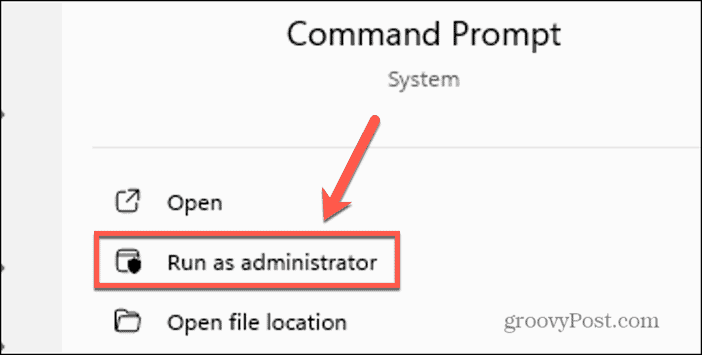
- Type sfc /scannow and press Enter.


- The System File Checker will run. It may take some time to complete; you’ll see a message once the process is finished.
- Once the SFC scan is completed, try restarting your PC again.
6. Run System Maintenance
Your computer automatically runs system maintenance for you, but you can try manually running it to see if this fixes the problems that are stopping your computer from starting up correctly. You can access this tool even if you’ve booted into Safe Mode.
- Type Control Panel in the Search field in the taskbar.


- Launch the Control Panel app from the results.


- Select Security and Maintenance.


- Click the Maintenance drop-down.


- Click Start Maintenance.

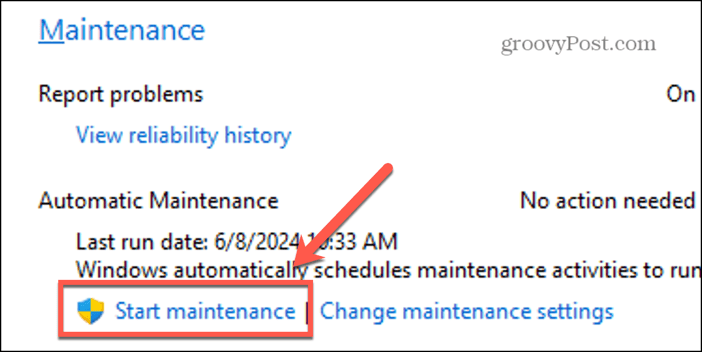
- Once the process has finished, try restarting your computer again.
7. Use the Startup Repair Tool
Another option that can help when you’re having issues with your computer starting is to use the Startup Repair tool. This is a feature that can help detect and fix problems that stop your computer from starting correctly.
- Hold down the Power key until your computer powers off.
- Press the Power key to restart your computer and tap F8 repeatedly until you see a blue screen appear.
- Select Troubleshoot.


- Click Advanced Options.


- In the Advanced Options, click Startup Repair.

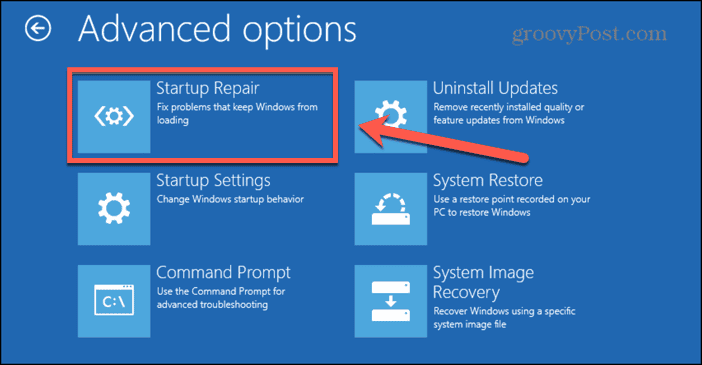
- The tool will search for any issues that may be stopping your computer from starting correctly, and repair any that it finds.
8. Restore to an Earlier Restore Point
If your computer isn’t working, you can roll back to a previous point when it was still functioning properly. If you’ve manually created restore points, or they’ve been created automatically, you can use them to return your computer to a prior state when everything was working as expected. This will remove things such as new software or drivers that have been installed since the restore point and which may be the cause of your problems.
- Hold down the Power key until your computer shuts down.
- Press the Power key to restart your computer and keep pressing F8 repeatedly until you see a blue screen.
- Select Troubleshoot.


- Select Advanced Options.


- In the Advance Options, click System Restore.

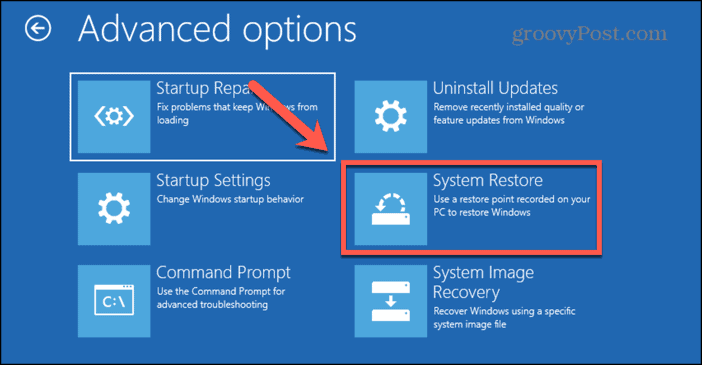
- Follow the instructions to select the restore point that you want to use.
- Once the process has been completed, your computer should start again as expected.
9. Turn Off Fast Startup
If you’re able to start your computer at any point, you can try disabling Fast Startup. This is a feature that puts your computer into deep hibernation rather than completely shutting it down so that it can restart faster. Turning this feature off may allow you to restart your computer without it getting stuck. It’s not possible to disable Fast Startup when you’ve booted into Safe Mode, as the feature isn’t enabled.
- Click the search field in the taskbar and type Control Panel.


- Open the Control Panel app from the results.


- Select Hardware and Sound.

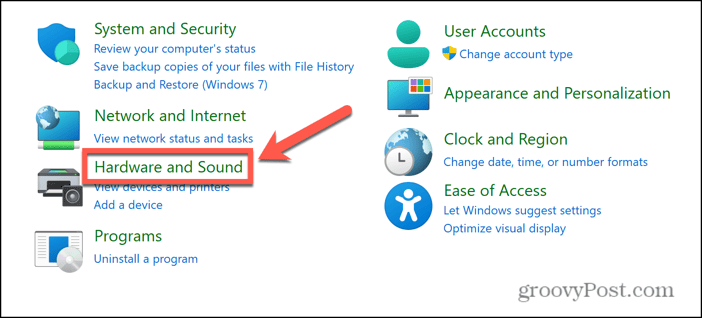
- Click Power Options.


- In the left-hand menu, click Choose What The Power Buttons Do.


- Click Change Settings That Are Currently Unavailable.


- Ensure Turn On Fast Startup is unchecked.

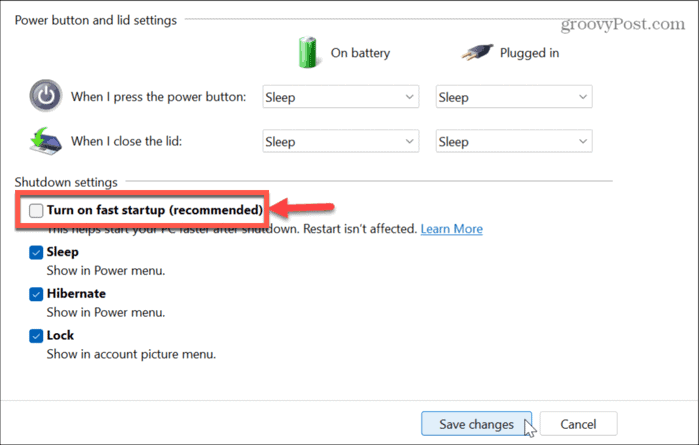
Fixing a Computer That’s Stuck Restarting
If your computer is stuck restarting, it can be a real pain. Hopefully one of the fixes above has helped. If you find any other useful solutions to the problem, please let us know in the comments.
Safe Mode is always a good place to start with issues like this. If you’re able to boot into Safe Mode, then it’s usually a sign that the core drivers and software are working fine and that the issue is with a driver or software that you’ve installed. Booting into Safe Mode also allows you to try some ways to fix the problems that are obviously impossible to access when you’re unable to start your computer normally.
Leave a Reply
Leave a Reply




































